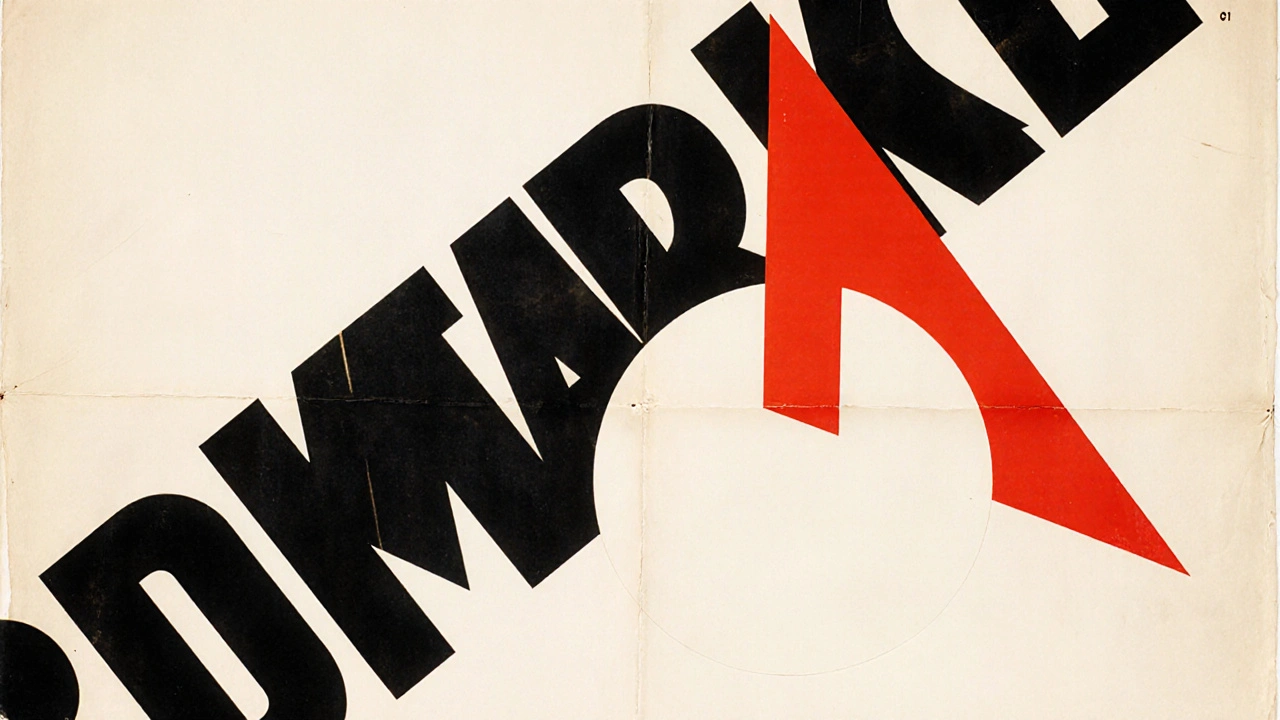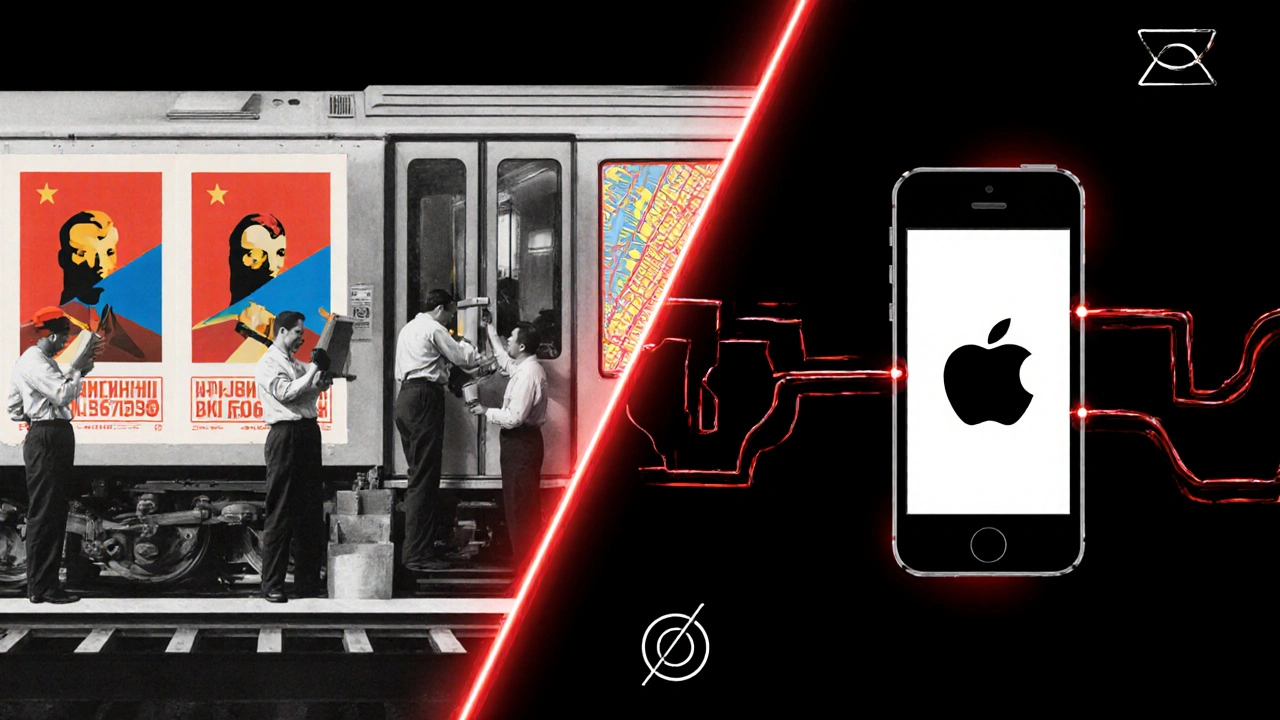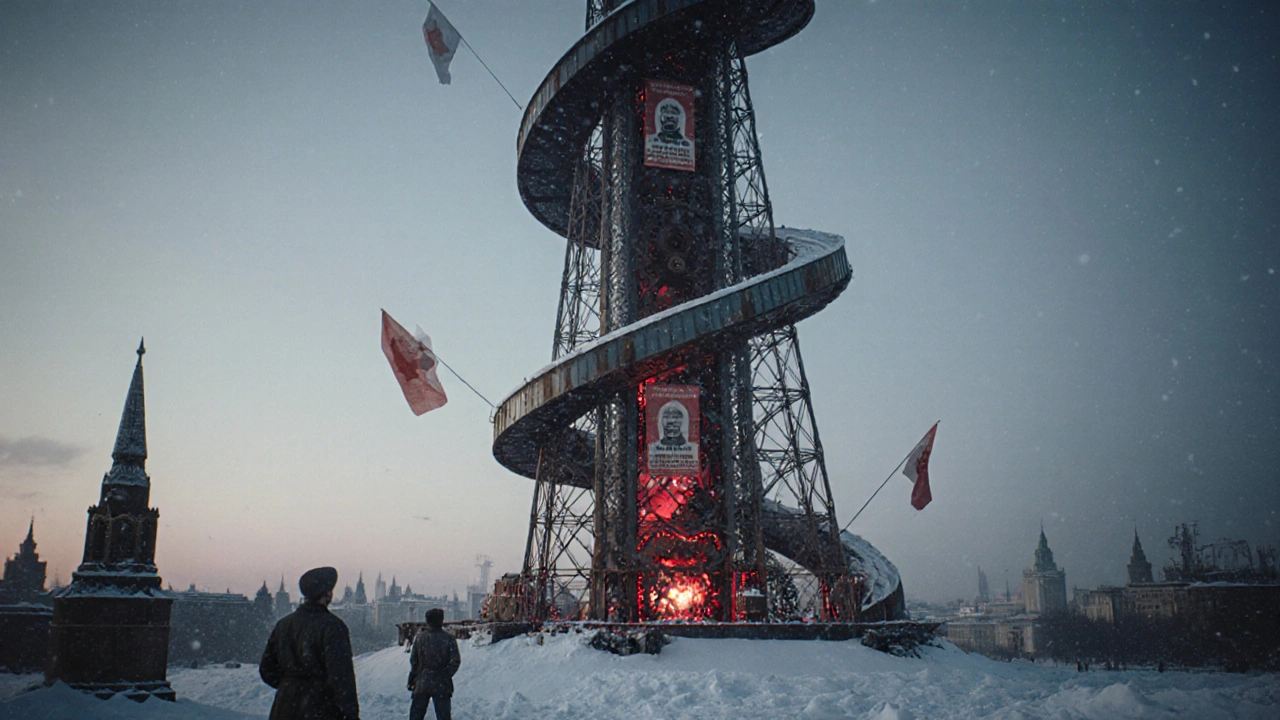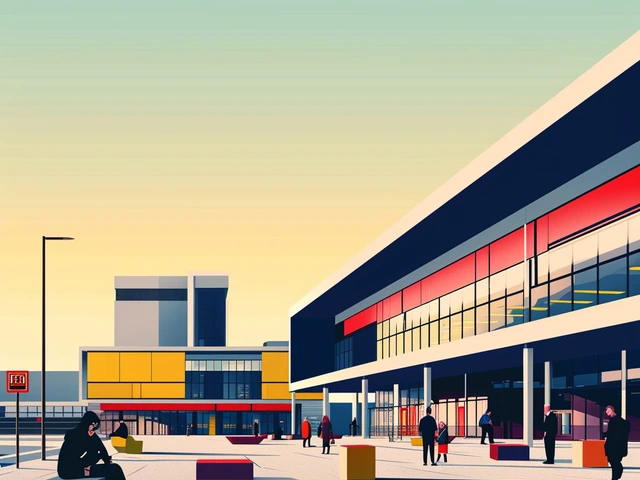Constructivist Color Palette Generator
Create functional color schemes inspired by Constructivist art. Select your primary colors and generate harmonious, readable palettes used in revolutionary Soviet design.
Color Scheme
Complementary colors based on Constructivist principles:
Why These Colors?
Constructivists used primary colors for maximum visual impact and clarity. As Vladimir Tatlin declared: "Art must be a tool for social transformation." These colors maintain high contrast for readability at distance, following the principle that form follows function.
Constructivism didn’t just change how art looked-it rewired how art could function. Born in Russia right after the 1917 Revolution, it wasn’t about hanging on walls. It was about building something new: tools, posters, buildings, even clothing. Artists didn’t want to decorate the world. They wanted to rebuild it.
What Constructivism Art Actually Was
Constructivism art rejected the idea that art should be beautiful for beauty’s sake. Instead, it embraced materials like steel, glass, and wood. It used sharp angles, bold lines, and primary colors. Artists like Vladimir Tatlin and Alexander Rodchenko treated art like engineering. They called themselves Constructivists is a radical art movement that emerged in Russia after the 1917 Revolution, prioritizing functional design, industrial materials, and social purpose over aesthetic decoration.
Think of Tatlin’s Monument to the Third International. It wasn’t a sculpture you admired from afar. It was a towering, spiraling tower meant to house government offices, broadcast propaganda, and rotate with the wind. It was never built-but its blueprint alone shook the art world. This wasn’t art as a luxury. It was art as a machine.
The Birth of a Movement
After the Bolsheviks took power, the old imperial art academies were shut down. In their place, the state created VKHUTEMAS-the Russian equivalent of the Bauhaus. Here, students learned to combine art with industry. They studied geometry, typography, and material science. Painters became designers. Sculptors became architects.
Alexander Rodchenko, once a painter, stopped making canvases in 1921. He declared, "I reduced painting to its logical conclusion-three primary colors, three primary forms." He then started designing posters, book covers, and even furniture. His 1924 poster for the state publishing house used bold red, black, and white. No flowers. No saints. Just stacked letters and a diagonal line that screamed urgency.
Constructivism didn’t come from a studio. It came from a factory floor. Artists worked with metalworkers, printers, and textile mills. They believed art should be mass-produced, not hand-crafted. A poster wasn’t just a poster-it was a weapon of revolution.
How Constructivism Changed Design
If you’ve ever seen a modernist logo, a minimalist magazine layout, or a clean-lined chair, you’ve seen Constructivism’s ghost.
Before Constructivism, posters were ornate-flowery fonts, detailed illustrations. Constructivists stripped all that away. They used sans-serif typefaces, asymmetrical layouts, and photomontage. They didn’t want you to pause and admire. They wanted you to act.
El Lissitzky’s 1920s posters for Soviet propaganda used rotating rectangles and bold red arrows. They didn’t explain. They directed. His famous Beat the Whites with the Red Wedge turned geometry into a battle strategy. A red triangle pierced a white circle. No words needed.
Even today, design schools teach Constructivist principles. The Swiss Style? The grid systems? The flat logos of Apple and Google? All trace back to this movement. Constructivists didn’t just invent modern design-they proved that form follows function, and function follows purpose.

Why It Was So Radical
Before Constructivism, art was owned by the rich. Paintings hung in palaces. Sculptures stood in courtyards for nobles to admire. Constructivists said: art belongs to the worker.
They designed propaganda for factories. They created agitprop trains that rolled through villages with posters and films. They made clothing with geometric patterns so workers could feel part of the new society. They even designed children’s toys with simple shapes to teach logic and spatial thinking.
This wasn’t art for galleries. It was art for streets, trains, factories, and schools. It had to be cheap, durable, and easy to reproduce. A poster had to be readable from 20 meters away. A book cover had to survive being passed hand-to-hand in a crowded subway.
And that’s what made it revolutionary. It wasn’t about personal expression. It was about collective action. Art wasn’t a mirror-it was a hammer.
Why Constructivism Faded
By the mid-1930s, the Soviet government turned against Constructivism. Stalin wanted art that glorified the state in a clear, heroic way-realism, not abstraction. Constructivism was too cold, too intellectual. Too much like engineering. Too little like heroes.
Artists were forced to conform. Rodchenko stopped designing and took up photography. Lissitzky shifted to architecture. Many fled abroad. The movement didn’t die-it scattered.
But its ideas lived on. Bauhaus teachers who had studied in Russia brought Constructivist ideas to Germany. After World War II, American designers and architects borrowed its clean lines and functional ethos. Even today, you’ll find Constructivist DNA in IKEA furniture, subway maps, and smartphone interfaces.

Where You Can Still See It Today
Look at the Apple logo. Simple. Geometric. No gradients. No shadows. That’s Constructivism.
Look at the New York City subway map. Designed by Massimo Vignelli in 1972. Straight lines. Only 45-degree angles. No geographic accuracy-just clarity. That’s Constructivism.
Look at the logo for the 1972 Munich Olympics. Designed by Otl Aicher. Bold shapes. Primary colors. No ornament. That’s Constructivism.
Even social media icons-like the Twitter bird or the Facebook "f"-follow the same rules: minimal, scalable, instantly recognizable. Constructivists would have approved.
It’s not about nostalgia. It’s about efficiency. About communication. About making something that works for everyone, not just the elite. That’s the spirit that still drives design today.
What Constructivism Teaches Us Now
In a world flooded with ads, noise, and clutter, Constructivism offers a quiet but powerful lesson: less is more-not because it’s trendy, but because it’s effective.
It reminds us that design isn’t just about looking good. It’s about solving problems. Can your website be understood in three seconds? Can your poster be read from a moving bus? Can your app be used by someone who doesn’t speak the language?
Constructivists didn’t ask, "Is this beautiful?" They asked, "Does this work?"
That question still matters. Maybe more than ever.
What was the main goal of Constructivism art?
The main goal of Constructivism art was to break away from traditional art forms and create practical, functional objects that served society. Artists believed art should be integrated into everyday life-used in factories, schools, and public spaces-not just displayed in museums. It was about building a new socialist world through design, not just painting it.
Who were the key artists of Constructivism?
The key artists included Vladimir Tatlin, who designed the iconic unbuilt Monument to the Third International; Alexander Rodchenko, who abandoned painting for graphic design and photography; and El Lissitzky, who pioneered photomontage and geometric propaganda posters. Others like Lyubov Popova and Varvara Stepanova contributed through textile and fashion design, expanding Constructivism beyond visual art into daily life.
How is Constructivism different from Suprematism?
Suprematism, led by Kazimir Malevich, focused on pure geometric forms like squares and circles as expressions of spiritual feeling. It was abstract but still contemplative-meant to be looked at. Constructivism, by contrast, rejected spirituality and embraced utility. It used the same shapes but turned them into tools: posters, buildings, radios. Suprematism was about emotion; Constructivism was about action.
Did Constructivism influence modern architecture?
Yes, profoundly. Constructivist ideas shaped early modernist architecture, especially in the Soviet Union. Buildings like the Narkomfin Communal House in Moscow used exposed concrete, rooftop terraces, and communal spaces-ideas that later influenced Brutalism. Architects like Le Corbusier and Walter Gropius studied Constructivist principles and brought them to the Bauhaus and beyond. Even today’s open-plan offices and modular housing owe something to Constructivist thinking.
Why did the Soviet government reject Constructivism?
By the 1930s, Stalin demanded art that glorified workers and leaders in a realistic, heroic way-Socialist Realism. Constructivism’s abstract, industrial style was seen as too cold, too intellectual, and not emotionally accessible to the masses. The government wanted paintings of strong men with hammers, not geometric posters. Artists who refused to conform were silenced or forced to change their style.




